Nov 22
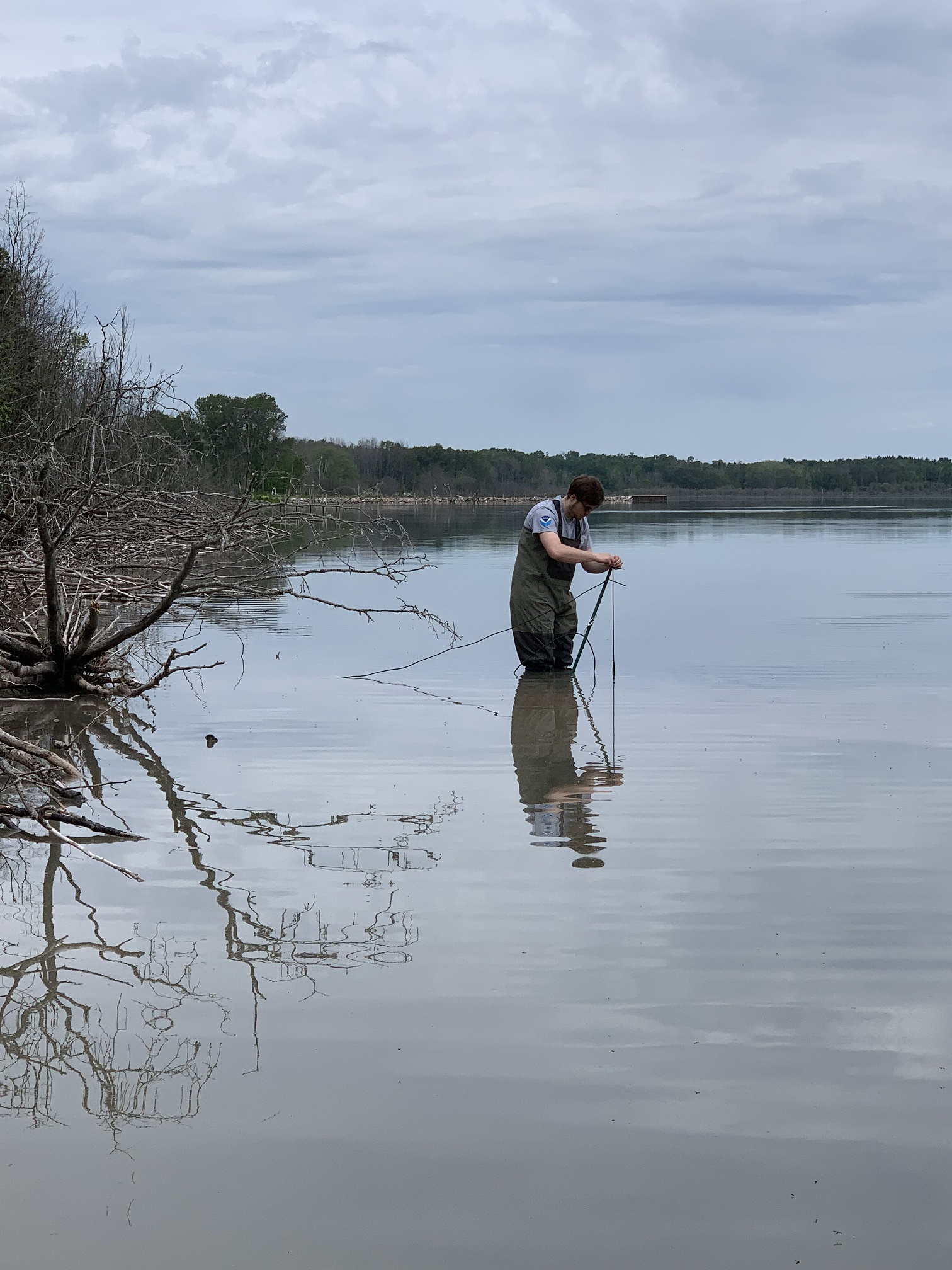
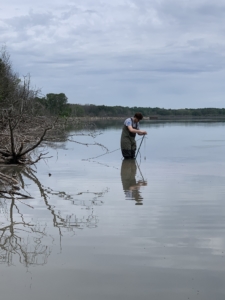
Lake Superior State University’s Center for Freshwater Research and Education (CFRE) expands its many conservation efforts through the recent strategic deployment of oil pollution sensors along Upper Great Lakes shorelines.
LSSU teamed with Ann Arbor-based LimnoTech, an environmental science and engineering firm that provides water-related services, on the oil pollution sensors; the company fabricates and operates them in the Great Lakes. Now, three have been placed along the St. Marys River and one is off the coast of Sugar Island. Lake State and LimnoTech received $10,000 in rapid-response funding from the Cooperative Institute for Great Lakes Research to underwrite the cost.
“Oil pollution sensors assist us in devising an effective way to identify and react to threats to natural resources. Case in point, the 5,300-gallon oil spill in the St. Marys River near us on June 9, 2022, that our invaluable partner the U.S. Coast Guard has been a leader in addressing,” said LSSU President Dr. Rodney S. Hanley. “Lake State not only recognizes but embraces its responsibility to play a key role in safeguarding the precious ecosystems and recreational waterways in the area.”
The sensors measure refined oil in the water and send the measurements via a cellular device to a cloud server so that data are available in real-time. The sensors form part of a pilot initiative to help establish a monitoring network to enable expeditious detection and amelioration of future oil spills in the Great Lakes.
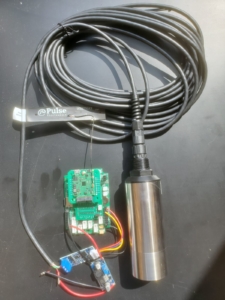
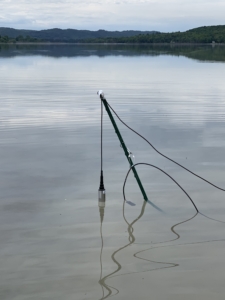
Oil pollution sensors build on numerous other examples of CFRE/LSSU stewardship. U.S. Sen. Gary Peters of Michigan selected Lake State last fall as the hub for the U.S. Coast Guard Natural Center of Expertise for the Great Lakes and home to its supervisor, with the mandate to examine the impact of oil spills on freshwater environments and develop countermeasures. The June 9 oil spill proved an urgent call to action.
In December 2021, LSSU unveiled its $14.2 million Richard and Theresa Barch CFRE with state-of-the-art equipment for students, faculty, and staff; an interactive Great Lakes Discovery Center for the public to explore for free; and office space for key external colleagues such as the Coast Guard Natural Center of Expertise for the Great Lakes.
And last week, LSSU released 27,000-plus Atlantic salmon yearlings that it had spawned and raised into the St. Marys River, continuing a decades-long tradition of annual replenishment and mindful sustainability. The refilling occurred on June 8 late in the evening to deter birds from swooping in to feed.
The event also honored Martin Vanderploeg, CEO and cofounder of Workiva Inc., a cloud-based software technology company for managing business data and headquartered in Ames, IA, who gave $1 million to CFRE, who enjoys freshwater fishing on the St. Marys River, and who called CFRE “a world-class program” and the Atlantic salmon release “a great event for the community.” LSSU designated the batch of Atlantic salmon the “Vanderploeg Class of 2022” in recognition of his late father.
The June 9 oil spill should not damage the Atlantic salmon yearlings, according to CFRE Director Dr. Ashley Moerke, because they congregate in the middle of water columns and oil spill pollution amasses on the surface; thus, the fish swim far below the danger zone. The oil, while unrecoverable, is biodegradable, and should dissipate, per reports attributable to the Coast Guard.
“Atlantic salmon annually raised by the students, staff, and faculty of the CFRE Fish Hatchery sustain the habitat, offer pastime for anglers, improve the quality of life of the region, and serve as a catalyst to the Michigan and Ontario, Canada, economies,” said Scott Smith, vice president of advancement at LSSU.
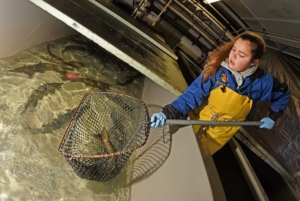
LSSU has named Atlantic salmon hatchery yearlings after Lake State stakeholders in 2002 (former LSSU President Dr. Robert D. Arbuckle), 2003 (Richard Zink), 2007 (John Giuliani), 2011 (Gale Gleason and Bill Gregory, cofounders of the fish hatchery), and 2016 (Dick Barch). LSSU has released tens of thousands of Atlantic salmon yearlings into St. Marys River annually since 1987 and has used its own brood stock to supply the eggs since 2004.
The seven-figure donation from Vanderploeg will further CFRE’s education, research, and outreach; bolster learning opportunities and hands-on experiences for its students and the public; increase innovative pathways for first-generation LSSU students to gain the industry knowledge, practical skills, and inner strength necessary to craft a life of meaningful employment, personal fulfillment, and outdoors preservation; and create an endowed professorship at CFRE.
“Whether releasing Atlantic salmon into the beautiful and vital St. Marys River every year, utilizing proactive tools such as the new oil pollution sensors to tend to the Atlantic salmon and to all of Mother Nature, hosting events for the general public about invasive species, or educating our students and neighbors on eco-restoration, it’s the duty of CFRE and LSSU to remain in the vanguard of fisheries and wildlife management in the academy and the community,” Hanley said.